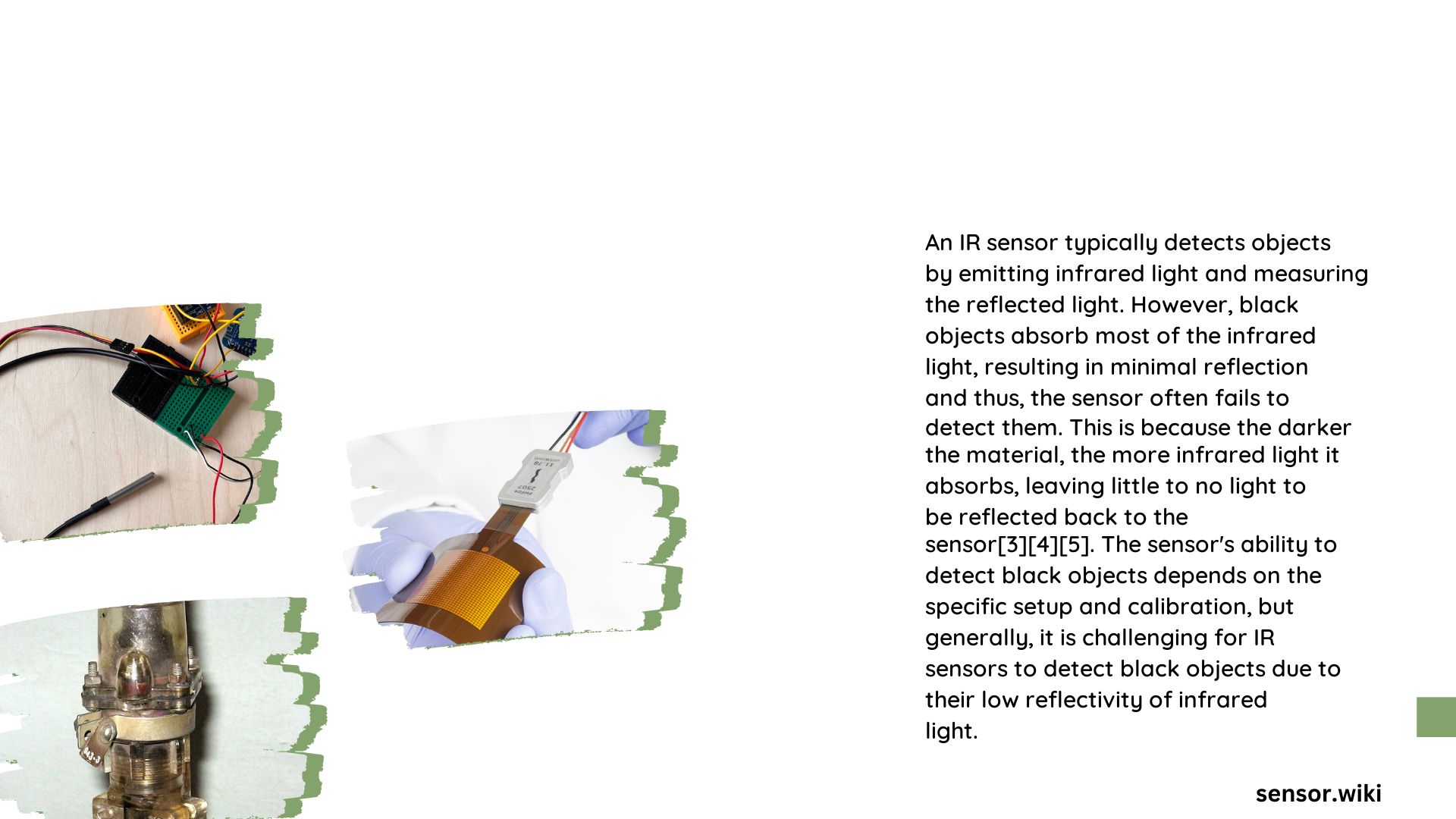Infrared sensors play a critical role in detecting black objects by analyzing infrared light reflection and absorption characteristics. These sophisticated electronic components leverage unique optical properties to distinguish between different surface colors and materials, enabling precise object recognition across various technological applications. Understanding the intricate mechanisms of IR sensor black object detection requires comprehensive insights into sensor technology, calibration techniques, and performance parameters.
What Are the Core Principles of IR Sensor Black Object Detection?
IR sensors detect black objects through specialized infrared light interaction mechanisms. When an infrared beam encounters a surface, the sensor analyzes the reflected radiation intensity to determine object characteristics.
Key Detection Mechanisms
- Reflection Analysis: Black surfaces absorb more infrared radiation
- Threshold Sensitivity: Sensors compare reflected light against predefined values
- Signal Processing: Electronic circuits interpret sensor output
How Do Infrared Sensors Measure Black Object Properties?

Sensor Performance Metrics
| Parameter | Typical Range | Significance |
|---|---|---|
| Detection Threshold | 0-4095 | Determines object recognition |
| Response Time | 1-100 ms | Indicates sensor speed |
| Sensing Distance | 0-5 cm | Operational range |
Calibration Strategies
Effective IR sensor black object detection requires precise calibration:
- Environment Preparation
- Select controlled lighting conditions
- Minimize external infrared interference
-
Use consistent background surfaces
-
Sensor Configuration
- Set appropriate threshold values
- Adjust sensitivity parameters
- Validate detection accuracy
What Challenges Impact IR Sensor Performance?
External Interference Factors
- Sunlight Exposure: High infrared radiation disrupts sensor readings
- Temperature Variations: Affects sensor sensitivity
- Surface Emissivity: Different materials reflect infrared differently
Technical Considerations for Optimal Detection
Advanced Sensor Characteristics
- Wavelength Sensitivity: Typically 850-940 nm range
- Signal-to-Noise Ratio: Critical for accurate measurements
- Temperature Compensation: Ensures consistent performance
How to Enhance IR Sensor Black Object Detection?
Recommended Optimization Techniques
- Use high-quality sensor components
- Implement digital signal processing
- Apply advanced calibration algorithms
- Consider environmental compensation methods
Practical Applications
IR sensor black object detection finds applications in:
- Robotics line tracking
- Automated sorting systems
- Security and surveillance
- Industrial quality control
Emerging Technologies and Future Developments
Ongoing research focuses on:
– Improved sensor miniaturization
– Enhanced signal processing algorithms
– Multi-spectral infrared sensing
Performance Benchmarks
- Typical Detection Accuracy: 95-99%
- Response Time: <10 milliseconds
- Operational Temperature Range: -20°C to 85°C
Conclusion
Mastering IR sensor black object detection requires understanding complex interaction between infrared radiation and surface properties. Continuous technological advancements promise more sophisticated and precise sensing capabilities.
